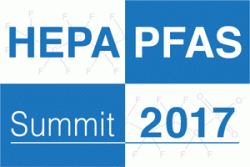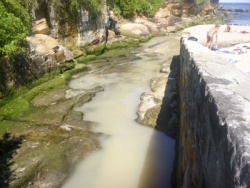
Search archive
Keeping your animals safe in an emergency
29/03/2017

Source: Department of Primary Industries and Regions, South Australia
Primary Industries and Regions SA (PIRSA), the agency responsible for biosecurity emergency preparedness in South Australia, has developed an Animals in Emergencies framework, in liaison with other government agencies and organisations including the RSPCA, Animal Welfare League and Primary Producers SA.
It is a guide on the key issues to be considered when planning for the welfare of small and large animals in the event of an emergency.
Good animal management includes ensuring the welfare of all animals before, during and after emergencies.
Events such as fire, storms and flooding can result in separation between animals and their owners, injury or death. Evidence however indicates animal owners are failing to plan ahead for such situations.
"In 2015 alone, major rural fires in South Australia resulted in over 72 000 known animal deaths. Such losses, along with injuries, impacts on people’s ability to recover from such events with farmers and livestock owners often facing economic hardship." said PIRSA Executive Director Will Zacharin.
"Understanding what you need to put in place, before, during and after emergencies will ensure both you and your animals are as safe as possible.
For further information on the Animals in Emergencies framework visit www.pir.sa.gov.au/animalsinemergencies
Download the Framework here.
PODCAST: The importance of proving commercial benefit to increase penalties
27/03/2017

Sentences for environmental offences in Queensland have historically been generally very low in comparison to the high commercial benefits that may be obtained through breaches of planning and environmental laws.
This podcast discusses real decisions on sentencing of environmental offences. You will hear how important it is to obtain evidence of commercial benefit while undertaking an investigation to prove an offence and how this evidence is key when arguing that the penalty must remove the benefit.
THE SPEAKER
Dr Chris McGrath is a barrister and a Senior Lecturer (Environmental Regulation) at the University of Queensland. He holds a BSc, LLB (Hons), LLM and PhD. He teaches Environmental Litigation at the Australian National University. Before being called to the Bar, he worked as an enforcement officer for the then Queensland Environmental Protection Agency.
HEPA Regulators PFAS Summit
23/03/2017

Environment Protection Authority Victoria (EPA), on behalf of the Heads of EPAs Australia and New Zealand (HEPA) and the Australian Government Department of Environment and Energy, is hosting a summit of international environment experts and regulators on PFAS.
The summit, from 4–5 April 2017 in Melbourne, will focus on the environmental regulation of PFAS based on current human health reference values for PFAS, and will make a significant contribution to the development of a PFAS national management plan.
It is an opportunity for environment and human health regulators to draw on their knowledge and experience to discuss the regulation of PFAS.
The summit will also act as:
- a platform for exchange of ideas about the regulation of PFAS,
- a forum to fast-track the development of a nationally consistent
approach to the environmental regulation of PFAS, - an opportunity to test options to be included in a draft PFAS national management plan.
Options for stakeholder consultation on the draft PFAS national management plan will be considered by Australian environmental regulators following the summit.
Keynote speakers
 Dr Éva Fetter – German Environment Agency
Dr Éva Fetter – German Environment Agency
Éva Fetter is a scientific officer at the German Environment Agency (Umweltbundesamt – UBA), which is the main environment agency in Germany, subordinated to the German Federal Ministry for the Environment, Nature Conservation, Building and Nuclear Safety.
Ms Fetter supports the Section of Chemicals engaged in activities under the European chemicals regulation (REACH – Registration, Evaluation, Authorisation and Restriction of Chemicals – EC1907/2006). She has a special focus on assessing chemicals with potential endocrine disrupting properties, and development and enforcement of risk management strategies concerning PFAS.
 Hilary Thornton – US Environmental Protection Agency
Hilary Thornton – US Environmental Protection Agency
Hilary Thornton has managed the cleanup of Superfund sites as a remedial project manager for the US Environmental Protection Agency since 1997.
He is a former co-chair of the EPA’s Engineering Forum and a current co-chair of the National Association of Remedial Project Managers (NARPM), as well as co-lead of the Engineering Forum Greener Cleanup Subcommittee. He chaired the Session on Characterization and Mitigation of PFASs (Per- and Polyfluoroalkyl Substances) at the March 2016 Emerging Contaminants Summit in Westminster, Colorado.
Mr Thornton presented a talk entitled, ‘Emerging contaminants: per-and polyfluoroalkyl substances (PFAS)’ to the Georgia Environmental Conference in Jekyll Island, Georgia on 25 August 2016. He presented an expanded version of that talk to the EPA Engineering Forum on 14 September 2016.
He currently leads a workgroup of the EPA’s Engineering Forum in developing an issue paper on PFAS.
Watch the keynote speeches
Members of the community, industry or business with an interest in PFAS can watch a live stream of the summit’s keynote speeches on this page on 4 April 2017 from 9.00am to 12.30pm (AEST).
The keynote speeches will be delivered by international experts who will speak about the regulatory response to the challenges posed by PFAS in their countries.
Attend in person
A limited number of places are available for people with an interest in PFAS to watch the keynote speeches in person on 4 April 2017 from 9am – 12.30pm at Melbourne Museum.
If you would like to attend in person you can express your interest via email to pfas@epa.vic.gov.au by Friday, 24 March 2017.
The video will also be available for viewing on this page after 12.30 pm (AEST) on 4 April.
Media Release: Tasmanian EPA considers proposal for a quarry on Cleveland at Ouse
21/03/2017
The Environment Protection Authority (EPA) has concluded its assessment of a proposed quarry on the Cleveland property, near Ouse in the Central Highlands municipality.
The quarry proposal by Cleveland Pastoral Estate Pty Ltd involves the production of up to 10,000 cubic metres of gravel per year near Chapmans Hill on the Cleveland property, 9 km north-west of Ouse.
The EPA Director, Mr Wes Ford, made the determination under delegation from the EPA Board, concluding the proposed quarry could be developed and managed in an environmentally sustainable and acceptable manner, with certain conditions. The EPA requires these conditions to be included in any permit subsequently granted by the Central Highlands Council.
“Various environmental issues were considered in the assessment, and standard conditions relating to sediment control, weed management and dust were included,” said Mr Ford.
No representations were received in relation to the permit application, which was referred to the Board in December 2016. Public consultation was open for a 14 day period commencing 21 January 2017.
The proposal was considered by the Director in the context of the sustainable development objectives of the Resource Management and Planning System of Tasmania (RMPS), and in the context of the objectives of the Environmental Management and Pollution Control System (EMPCS) established by the Environmental Management and Pollution Control Act 1994 (EMPCA).
The functions of the EPA are to administer and enforce the provisions of EMPCA, and in particular to use its best endeavours to protect the environment of Tasmania, and to further the RMPS and EMPCS objectives.
The Director undertook the assessment of the proposal in accordance with the Environmental Impact Assessment Principles defined in Section 74 of EMPCA.
The Director’s environmental assessment, including the environmental conditions that must be included in any permit, have been forwarded to Central Highlands Council, for review of planning issues prior to making a decision as to whether a permit is to be granted.
The decision by the EPA Director can be viewed on the EPA website at http://epa.tas.gov.au/assessment/completed-assessments
For more information please contact:
EPA Communications Coordinator
(P) 03 61 65 4420 (M) 0408 478897
www.epa.tas.gov.au
PODCAST: U.S. Environmental Enforcement in Transition
16/03/2017

Professor Glicksman recently visited the SA EPA to discuss U.S. Environmental Enforcement in Transition and you can listen to the podcast here. Available to AELERT members only.
President Abraham Lincoln once said that "Laws without enforcement are only good advice." That truism certainly applies to environmental law. Scholars and policymakers for years have debated the best ways to improve environmental compliance, including, but not limited to maximising the impact of government enforcement.
The transition from President Obama to President Trump raises that question anew. Under the Obama Administration, the federal Environmental Protection Agency embarked on a program called "Next Generation Compliance," which sought to supplement traditional enforcement with the use of innovative technologies to bolster compliance in the face of declining enforcement resources.
The impact of this Next Gen effort is unclear, as well as its fate under the Trump Administration. In addition, the Trump Administration is expected to scale back federal participation in all aspects of environmental law. That approach will make both state and private enforcement more important than ever.
This presentation reviews these aspects of the voluble landscape of environmental enforcement in the U.S.
Further information about Professor Glicksman is available at https://www.law.gwu.edu/robert-l-glicksman
Builder hit with $8K fine for polluting Coogee Beach
08/03/2017

A builder working in Coogee who pumped untreated sediment-laden water directly into the stormwater system has been hit with an $8,520 fine by Randwick City Council.
On Monday 20 February 2017, beach-goers at Coogee Beach noticed white sediment-laden water flowing from the stormwater pipe at the northern end of the beach.
Council’s Environmental Health Officers attended the beach and were able to trace the source of the pollution back to a building site on Mount Street where a builder was pumping site water into the stormwater system via a rear lane.
The builder was immediately instructed to cease and later issued with Prevention Notice and fine for committing an offence under Section 120 of the Protection of the Environment Operations Act 1997.
Randwick Mayor Noel D’Souza said the fine should send a strong message.
“This type of behaviour is irresponsible and environmental vandalism. The stormwater system flows directly to our beaches – there’s no magic filter.
“I’d like to thank the local residents who reported this to Council and worked with us to find and stop the source of pollution,” Mayor D’Souza said.
Source: Randwick City Council


Australia State of the Environment Report 2016
07/03/2017

An independent review of the state of Australia’s environment has found the impacts of climate change are increasing.
However, it also shows that over the past 5 years (2011–16), environmental policies and management practices in Australia have achieved improvements in the state and trends of parts of the Australian environment. Australia’s built environment, natural and cultural heritage, and marine and Antarctic environments are generally in good condition.
For some parts of the Australian environment effective policy and management have contributed to improved outcomes for the environment and for people.
Australia State of the Environment 2016, the fith national assessment on the state of the environment, has been prepared by independent experts using the best available information to support assessments of environmental condition, pressures, management effectiveness, resilience, risks and outlook.
View the reports here.
40 tonnes of unregistered chemical product detained
02/03/2017

Source: APVMA
Two 20,000 kilogram containers of glyphosate and trifluralin were detected and detained in Melbourne late last year for failing to meet their Australian Pesticides and Veterinary Medicines Authority (APVMA) registered particulars, which meant they were unregistered under Agvet law.
Extensive discussions with the importer and overseas manufacturing companies—conducted over a four week period—confirmed the APVMA’s concerns.
The chemical products were returned to the source country in mid-December 2016 at the Australian importer’s expense.
All holders of agricultural chemical product registrations need to be reminded to make sure the chemicals that they are importing and supplying comply with their APVMA registered particulars and conditions of registration. Registered chemical products must be manufactured in accordance with the formulation details that the APVMA has on record. Chemical products must be manufactured at the site of manufacture that is detailed on the APVMA Register for the product.
If a overseas manufacturing site has closed down, it is time to review and update the APVMA records.

